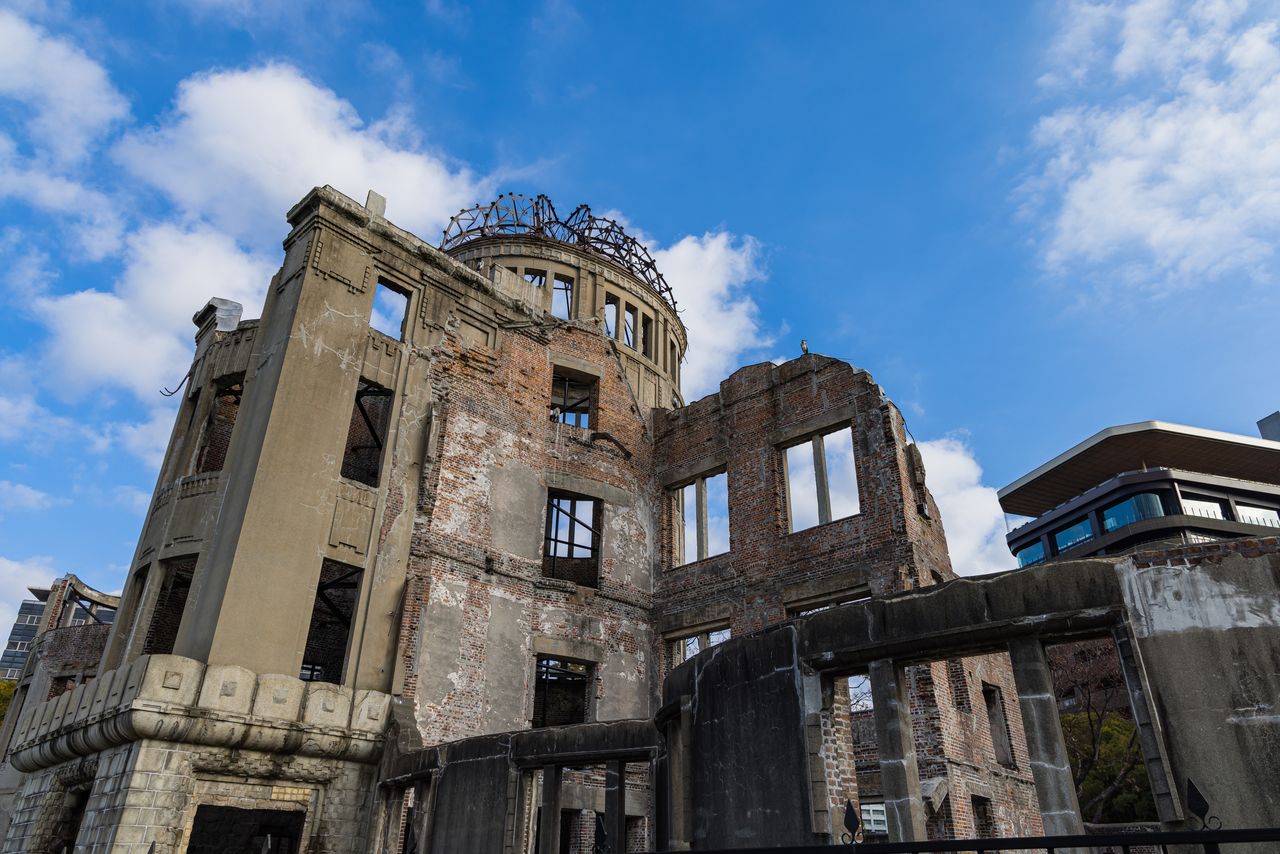
Nihon Hidankyō and the Global Nuclear Disarmament Movement: A Timeline
History Society Politics- English
- 日本語
- 简体字
- 繁體字
- Français
- Español
- العربية
- Русский
August 1945 Atomic bombs dropped on Hiroshima and Nagasaki.
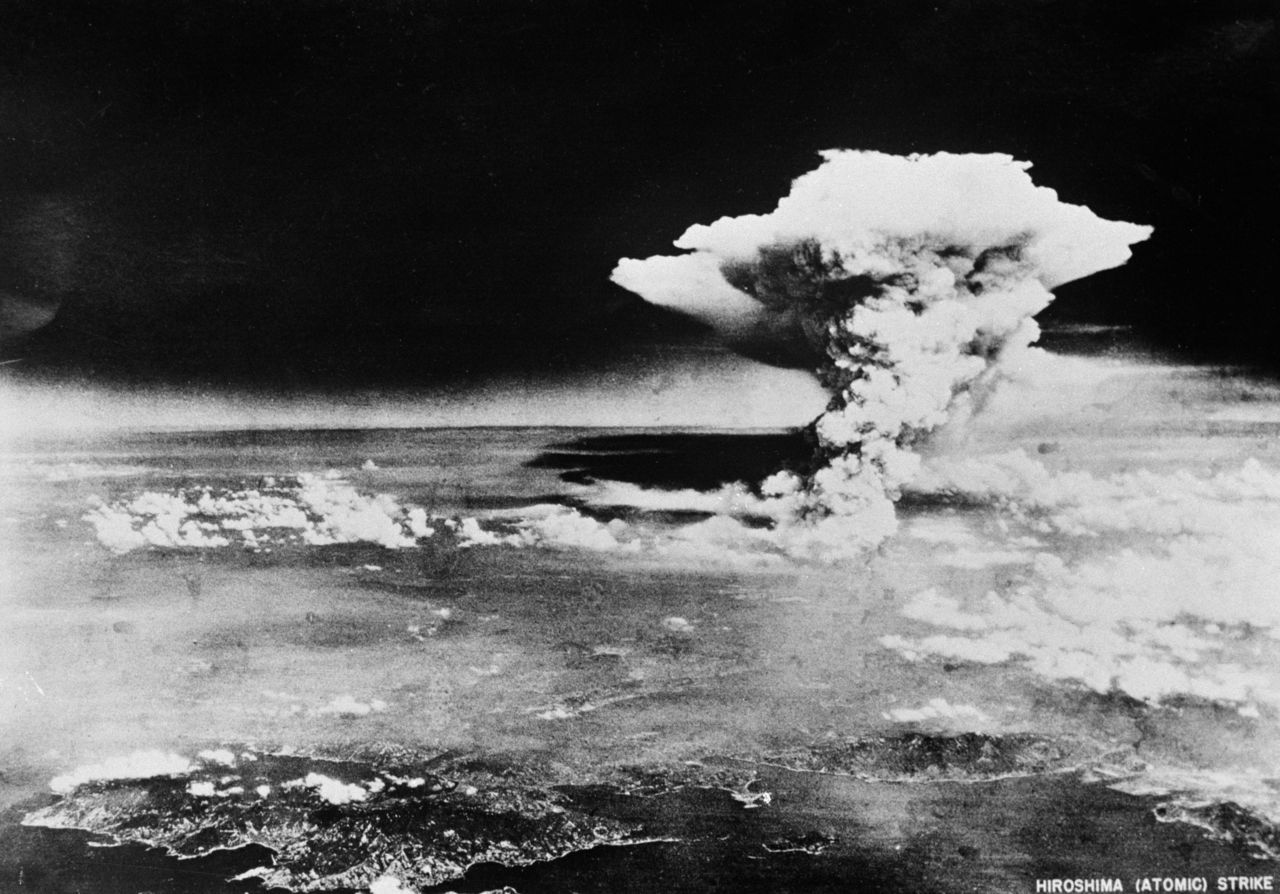
The “mushroom cloud” rising after the atomic bomb was dropped on Hiroshima. This photo was probably taken by an American plane about an hour after the bombing, in the vicinity of Kurahashijima south of the city. (Courtesy Hiroshima prefectural government; © Jiji)
March 1954 The United States tests a hydrogen bomb over Bikini Atoll in the Marshall Islands; 23 Japanese aboard the No. 5 Fukuryūmaru, a long-line tuna fishing boat, are irradiated.
August 1955 First World Conference against Atomic and Hydrogen Bombs held in Hiroshima.
August 1956 Second World Conference against Atomic and Hydrogen Bombs held in Nagasaki. Meeting to create Nihon Hidankyō (the Japan Confederation of A- and H-Bomb Sufferers Organizations) held at the same time.
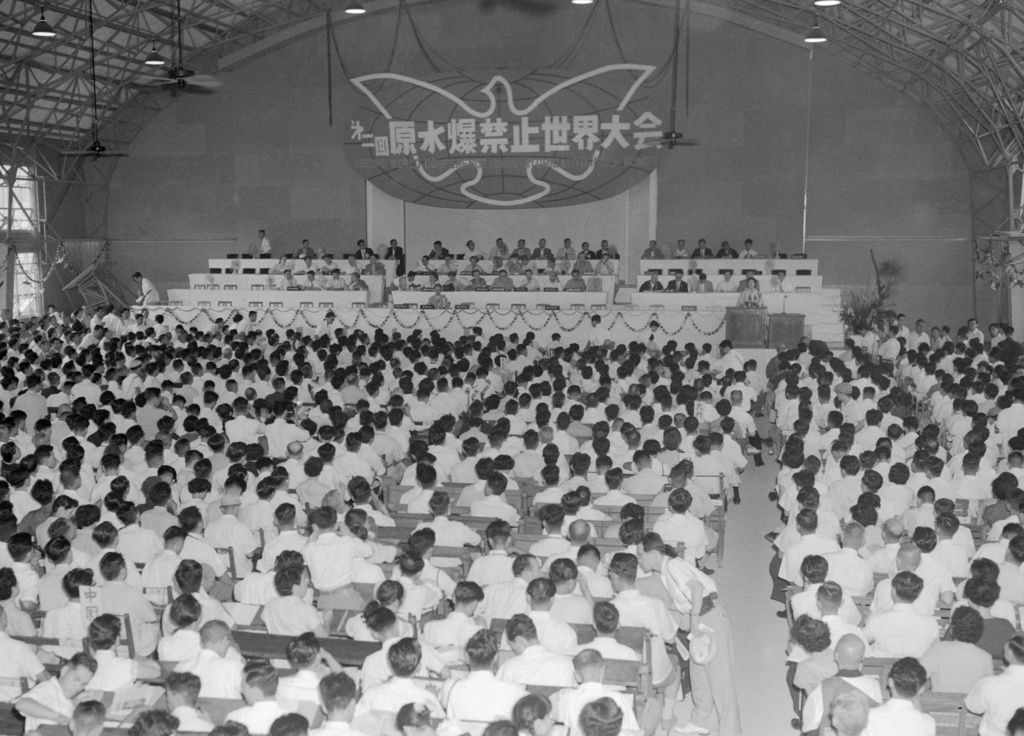
Second World Conference against Atomic and Hydrogen Bombs, in Nagasaki. (© Kyōdō)
April 1957 A-Bomb Survivors Medical Treatment Law enacted.
October 1966 Hidankyō announces demands to recognize the particular nature of atomic bomb damage and a law to support atomic bomb survivors.
September 1968 A-Bomb Survivors Special Measures Law enacted.
July 1981 The movement for a “people’s tribunal” to clarify Japan’s war responsibility through the courts begins.
June 1982 Yamaguchi Senji gives the historic “No More Hiroshima, No More Nagasaki” speech at the Special Session of the United Nations General Assembly on Disarmament.
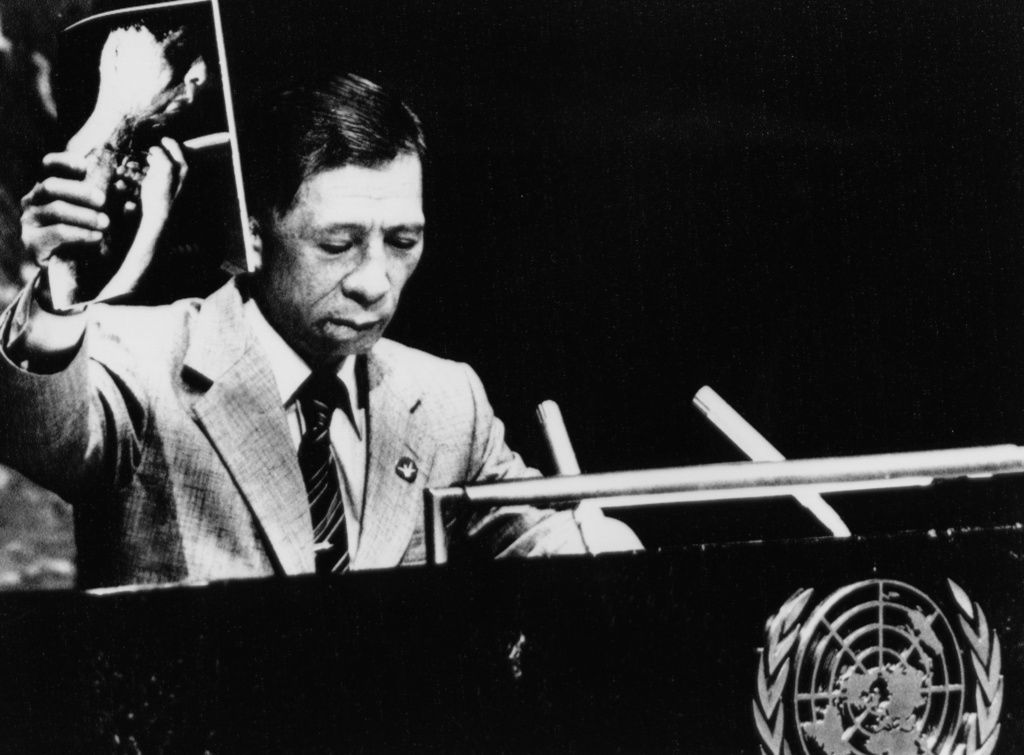
Yamaguchi Senji holding aloft a photo showing his injuries during his speech at the United Nations. (© Kyōdō)
July 1995 Atomic Bomb Survivors Support Law, combining the A-Bomb Survivors Medical Treatment Law and the A-Bomb Survivors Special Measures Law, enacted.
December 1996 Hiroshima Peace Memorial (the A-Bomb Dome) designated a UNESCO World Heritage Site.
April 2003 Class action suit begun to obtain certification of atomic bomb sickness.
April–May 2005 Nihon Hidankyō New York march (by representatives of Hidankyō and Co-op (Seikyō)).
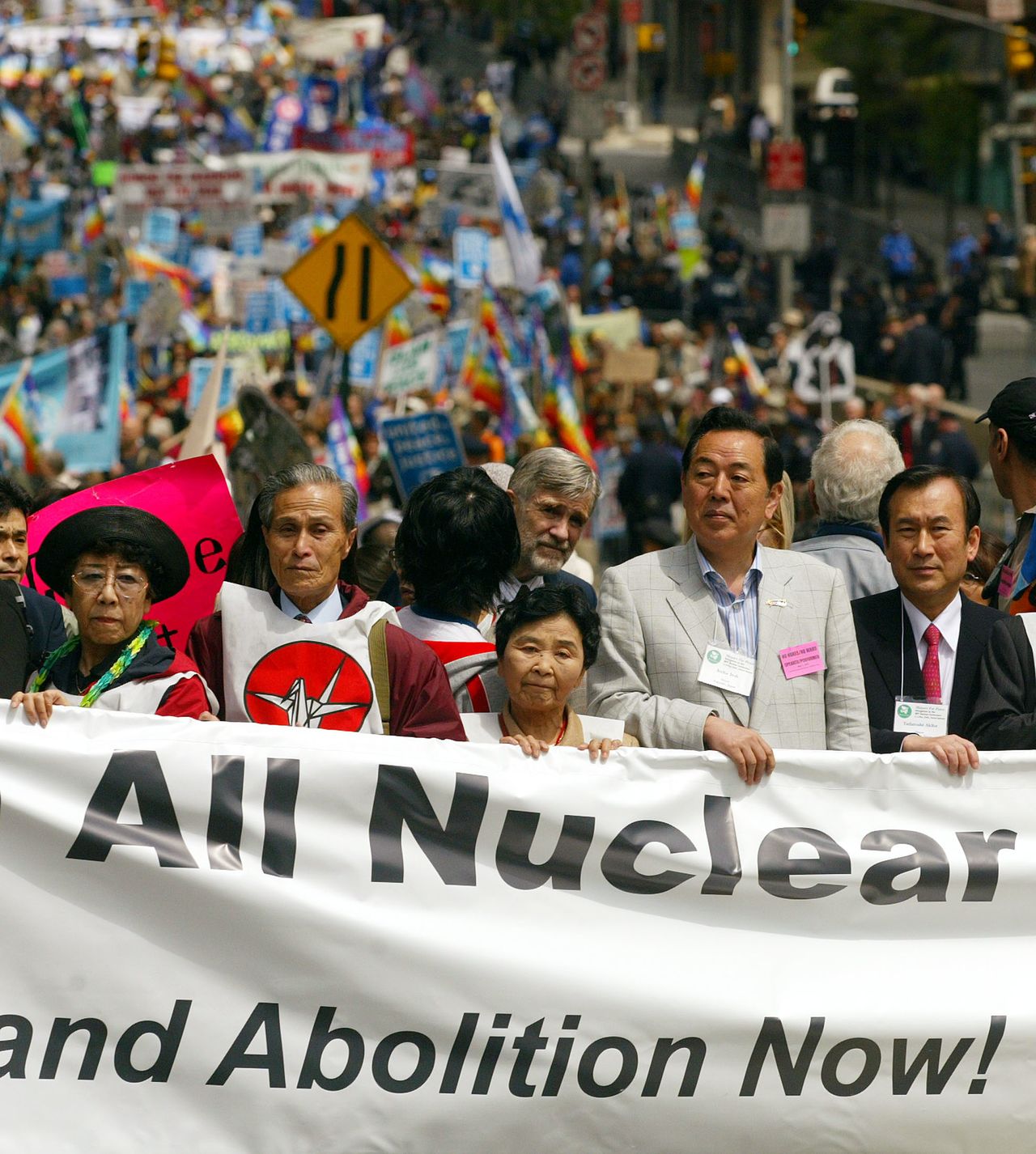
Marching for nuclear disarmament in the streets of New York. (© Reuters)
April 2009 US president Barack Obama speaks in Prague, Czech Republic, urging a move toward a world without nuclear weapons. Obama receives the Nobel Peace Prize the same year.
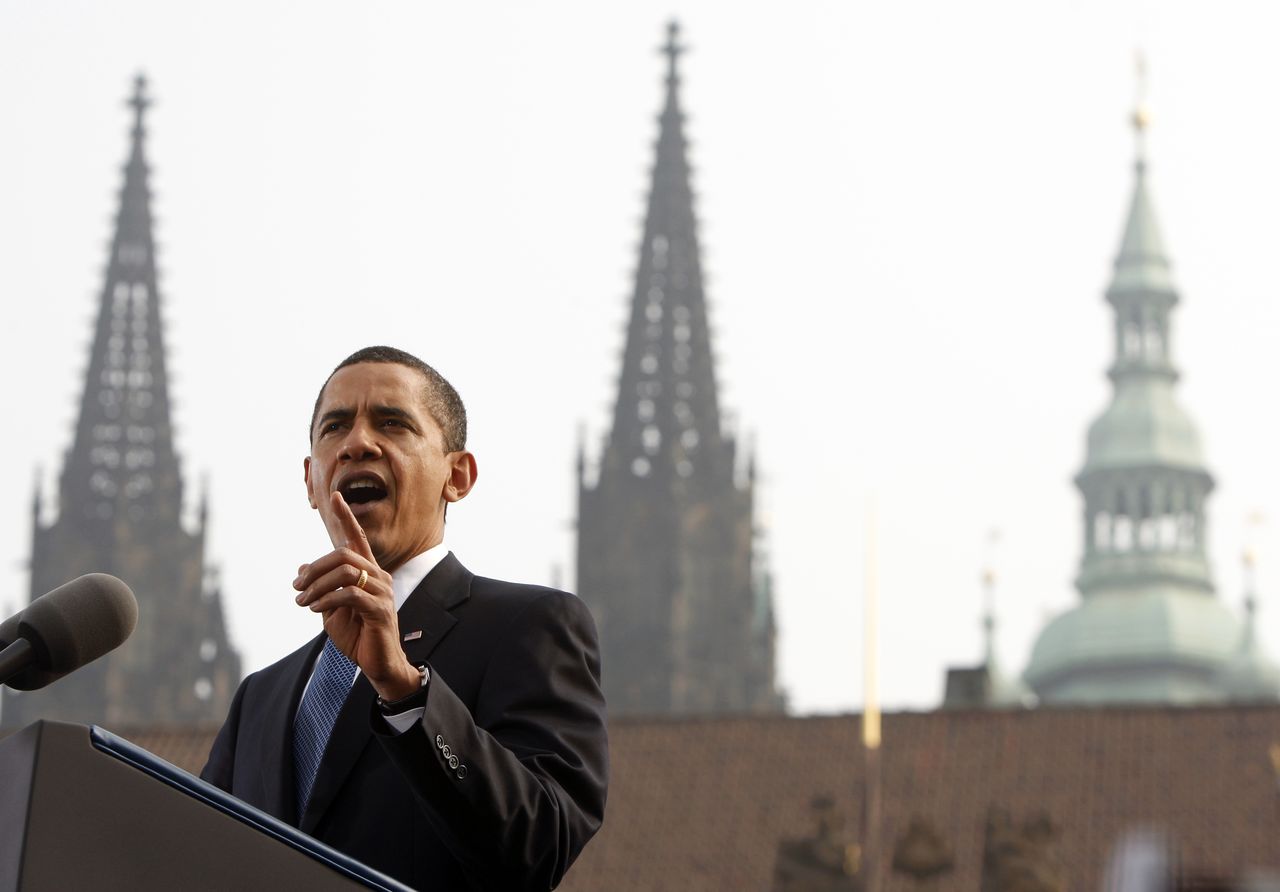
Barack Obama speaking in Prague. (© Reuters)
April 2010 Law Concerning Relief to Atomic Bomb Survivors, establishing a relief fund in response to dismissal of plaintiffs’ suit for recognition as victims, enacted.
May 2010 Taniguchi Sumiteru speaks, displaying a photo of the burns he suffered as a result of the atomic bombing, at the Review Conference of the Parties to the Treaty on the Non-Proliferation of Nuclear Weapons at the United Nations headquarters in New York.
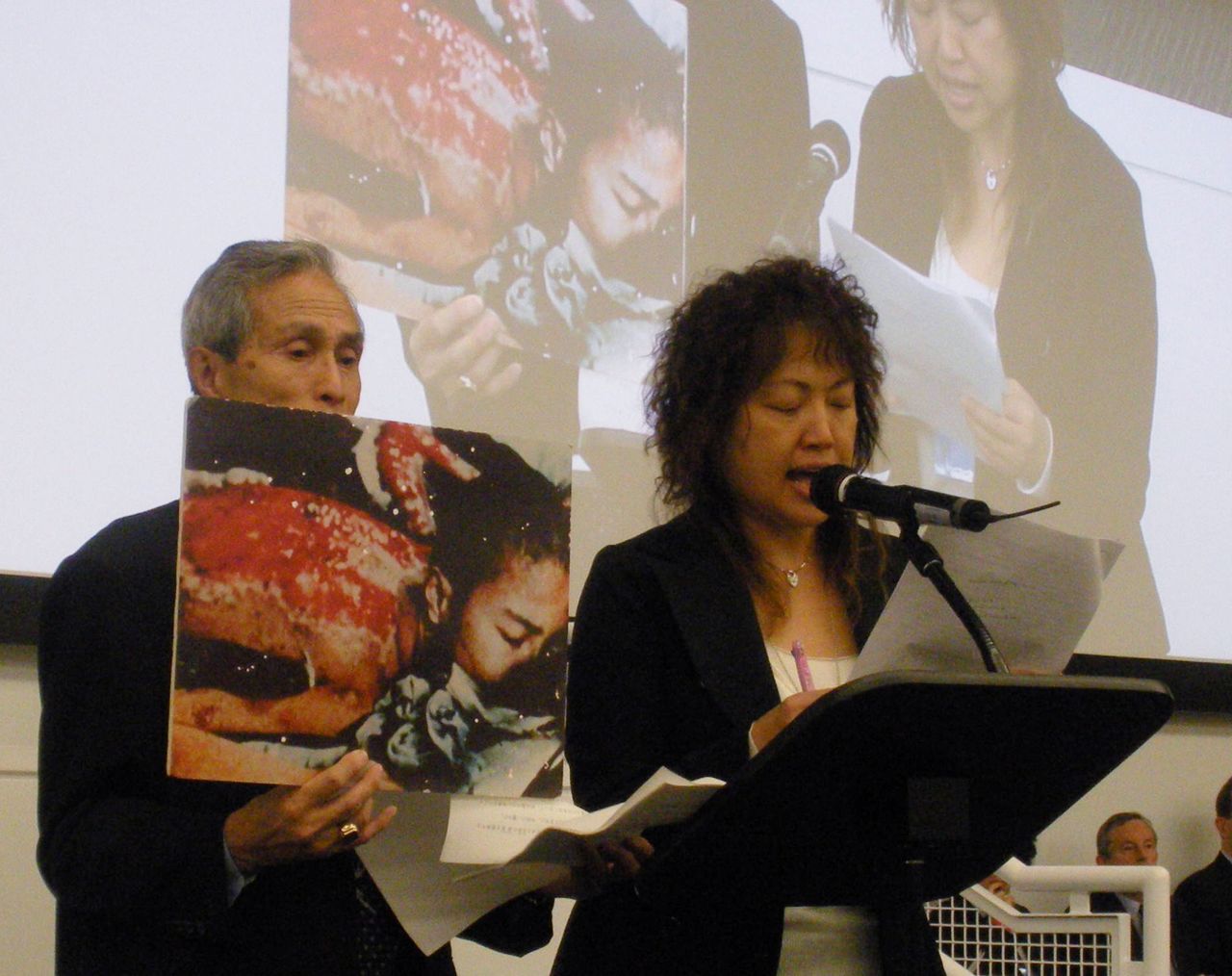
Taniguchi Sumiteru (left), speaking at the United Nations headquarters in New York. (© Jiji)
August 2015 The Hiroshima and Nagasaki Declaration on the Seventieth Anniversary of the Atomic Bombings
April 2016 Global petition movement to demand enactment of a Treaty on the Prohibition of Nuclear Weapons begins.
May 2016 Hidankyō Co-Chair Tsuboi Sunao meets with Barack Obama during the latter’s visit to Hiroshima.
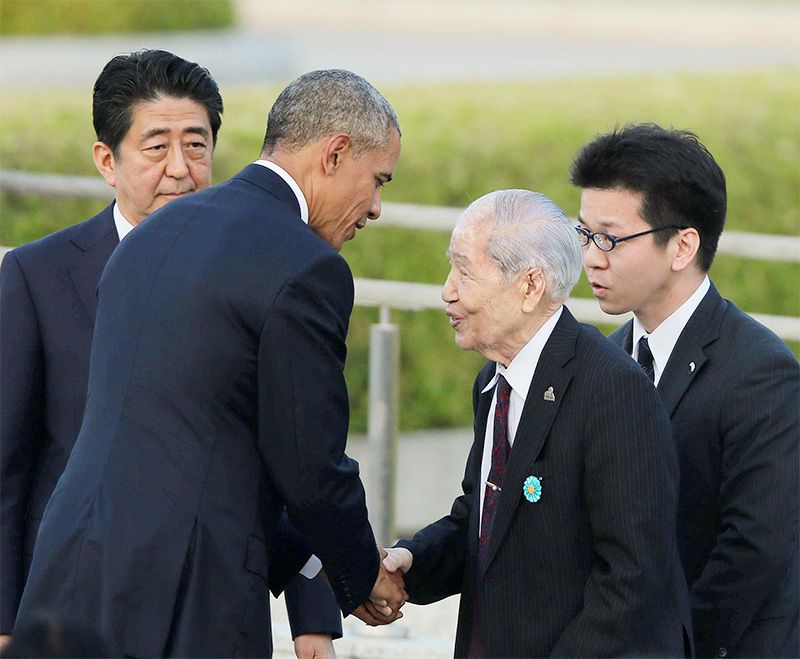
Atomic bomb survivor Tsuboi Sunao (center right) shakes hands and speaks with President Obama at the Peace Memorial Park, Hiroshima, on May 27, 2016. (© Jiji)
July 2017 The United Nations adopts the Treaty on the Prohibition of Nuclear Weapons.
October 2017 The International Campaign to Abolish Nuclear Weapons (ICAN) is awarded the Nobel Peace Prize.
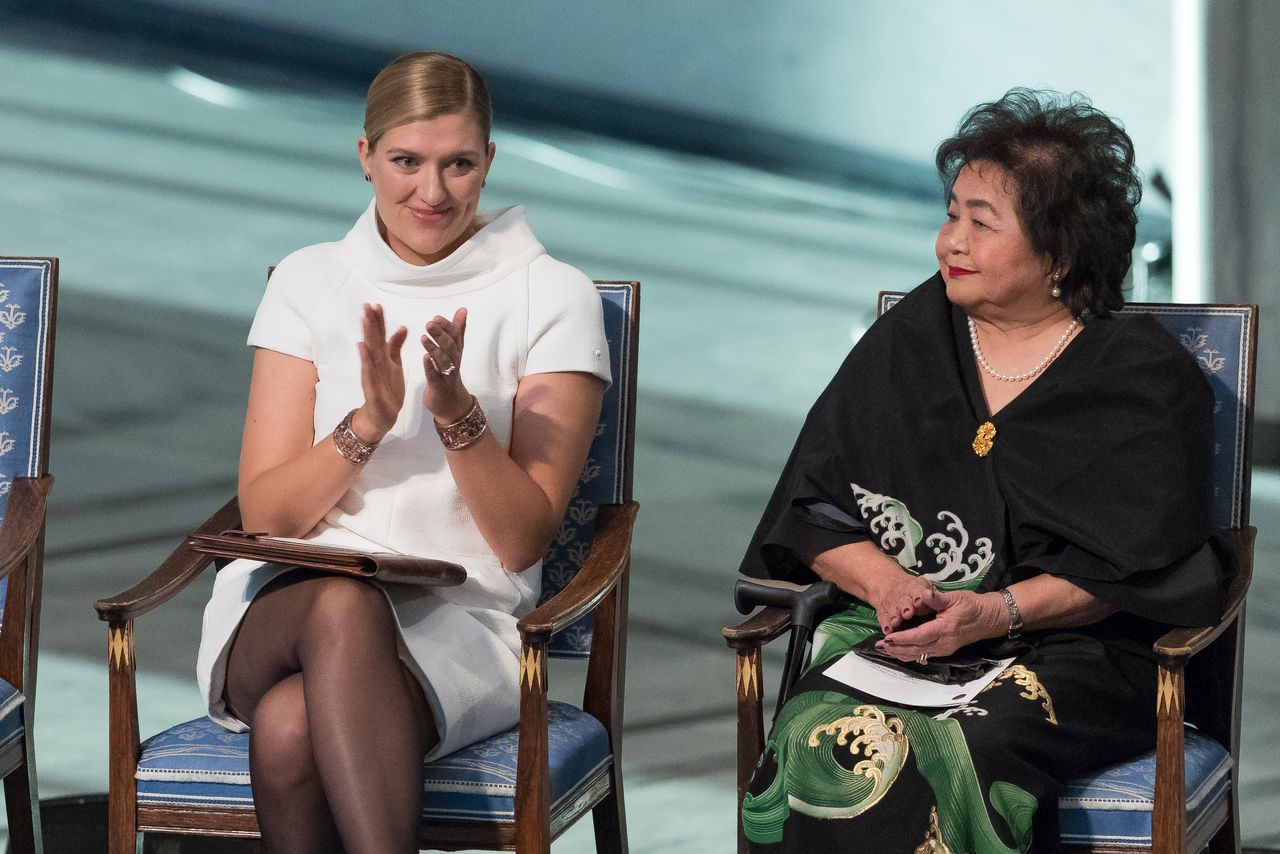
Atomic bombing survivor Setsuko Thurlow (right), now living in Canada, speaks at the Nobel Prize award ceremony in December 2017. (© Nigel Waldron/WireImage/Getty Images)
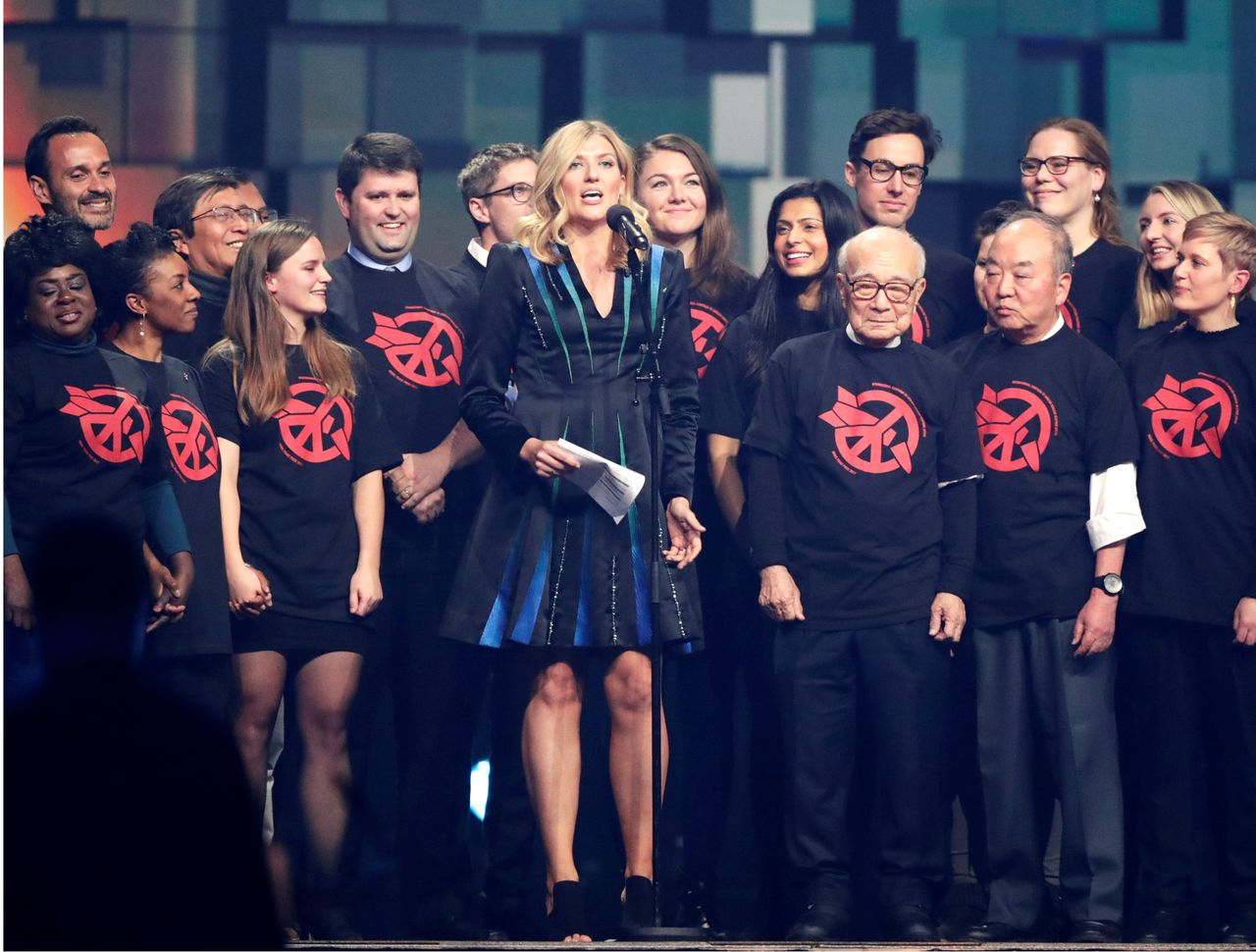
Hidankyō representatives Tanaka Terumi (front row, third from right) and Fujimori Toshiki (front row, second from right) on stage with ICAN Executive Director Beatrice Fihn(center) during the Nobel Peace Prize concert in Oslo in December 2017. (© Reuters)
October 2019 Nihon Hidankyō Assistant Secretary General Fujimori Toshiki presents the list for an international hibakusha petition calling for the abolition of nuclear weapons signed by 10,517,872 people at the United Nations headquarters.
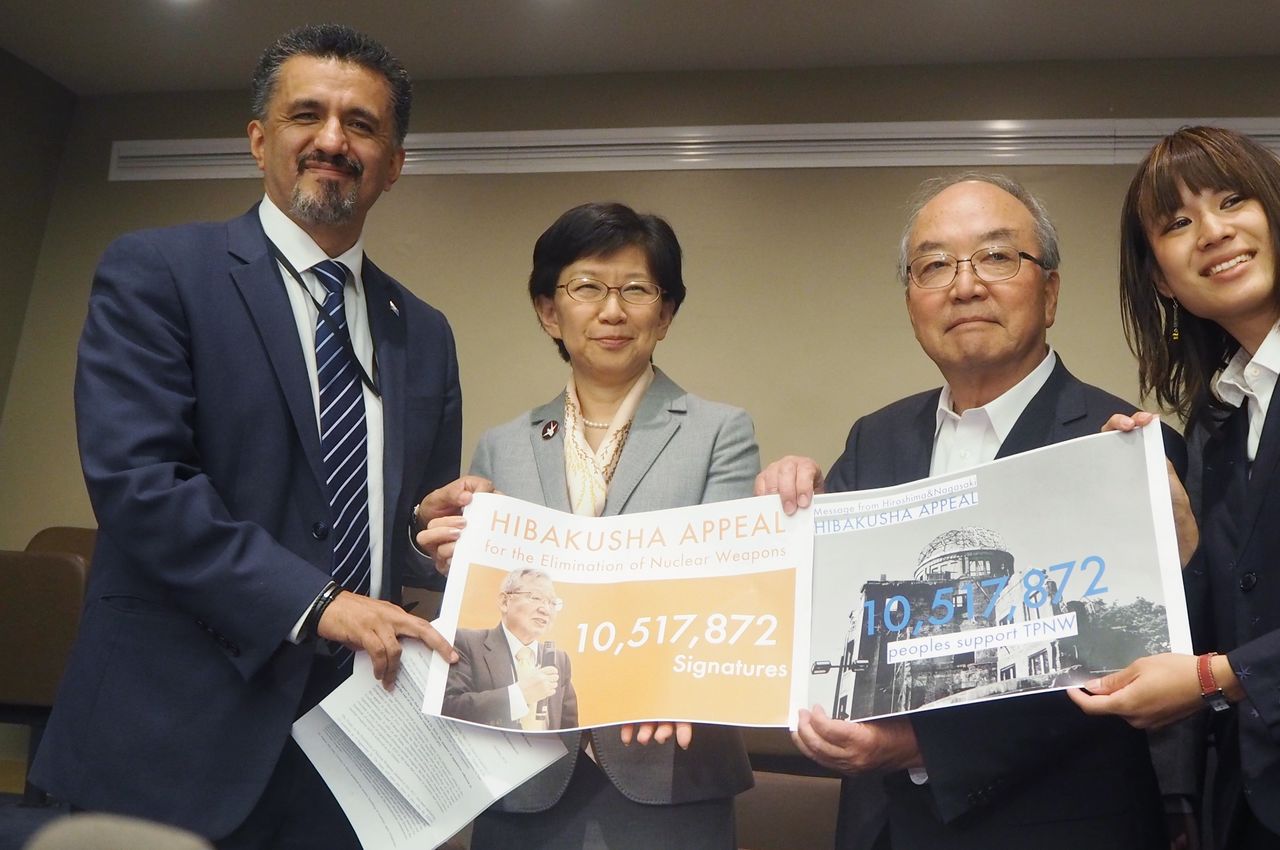
Bolivia’s Ambassador to the United Nations Sacha Llorenti (left), with United Nations Under-Secretary-General of Disarmament Affairs Nakamitsu Izumi, and Fujimori Toshiki. (© Jiji)
January 2021 Treaty on the Prohibition of Nuclear Weapons goes into effect.
October 2021 Tsuboi Sunao passes away.
May 2023 The G7 Summit Meeting is held in Hiroshima. Leaders visit the Peace Memorial Museum.
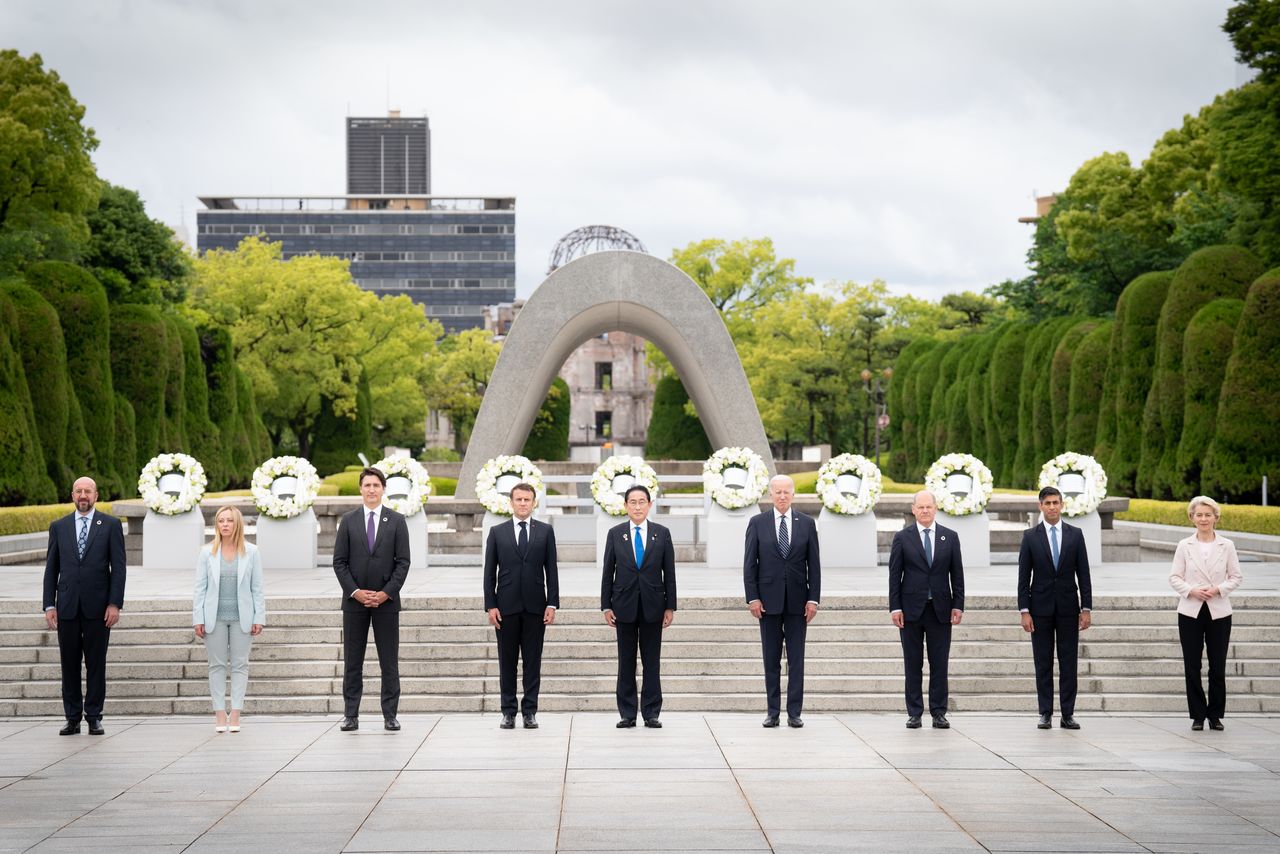
After visiting the museum, the leaders lay wreaths at the cenotaph. (© Stefan Rousseau, WPA Pool/Getty Images)
October 2024 Nihon Hidankyō awarded the Nobel Peace Prize.
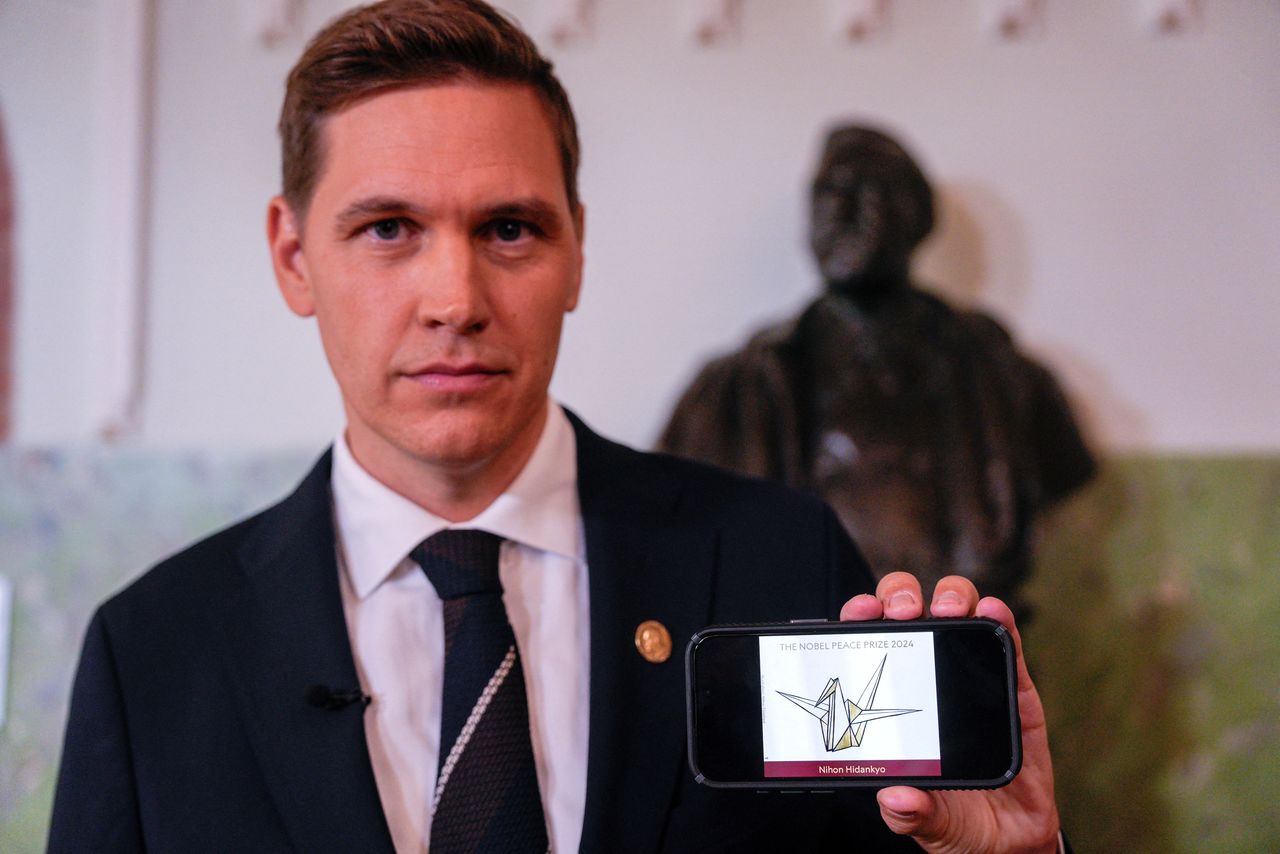
Joergen Frydnes, Nobel Peace Prize committee chair, shows the Nihon Hidankyō logo at the press conference announcing the winner of the prize. (© Reuters)
(Translated from Japanese. Banner photo: A poster congratulating Nihon Hidankyō on winning the Peace Prize, displayed at Oslo’s Nobel Peace Center. © Steffen Trumpf/picture alliance via Getty Images.)

